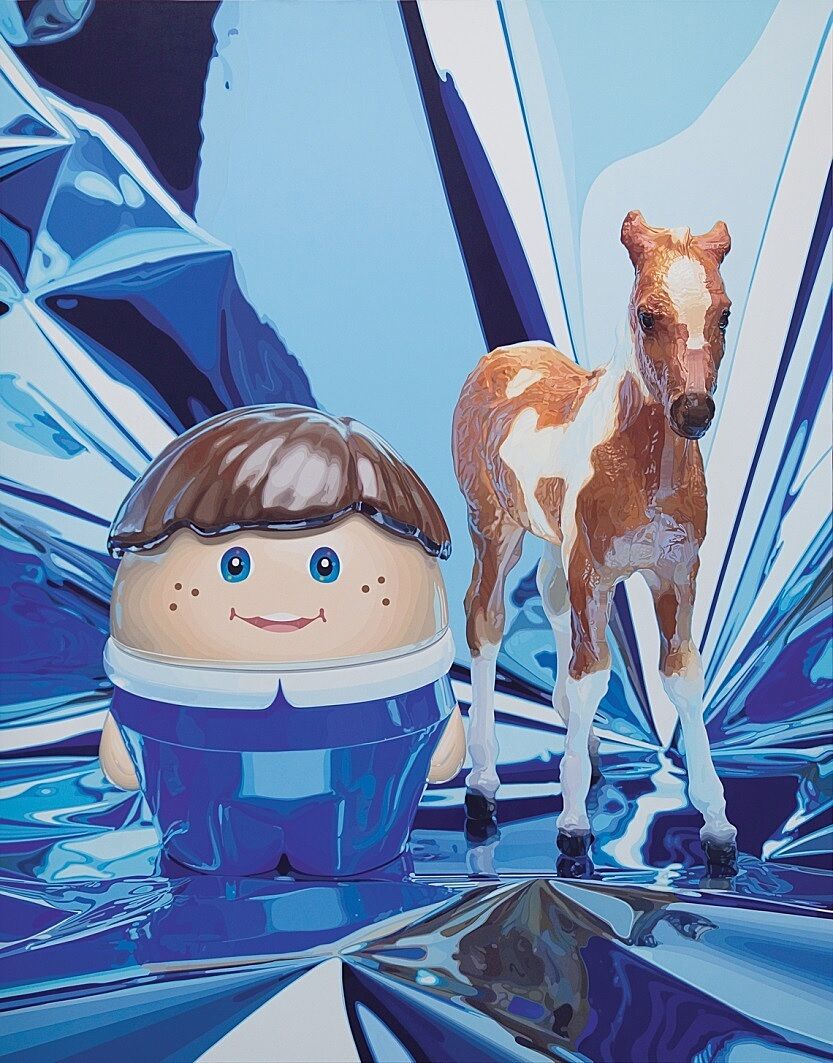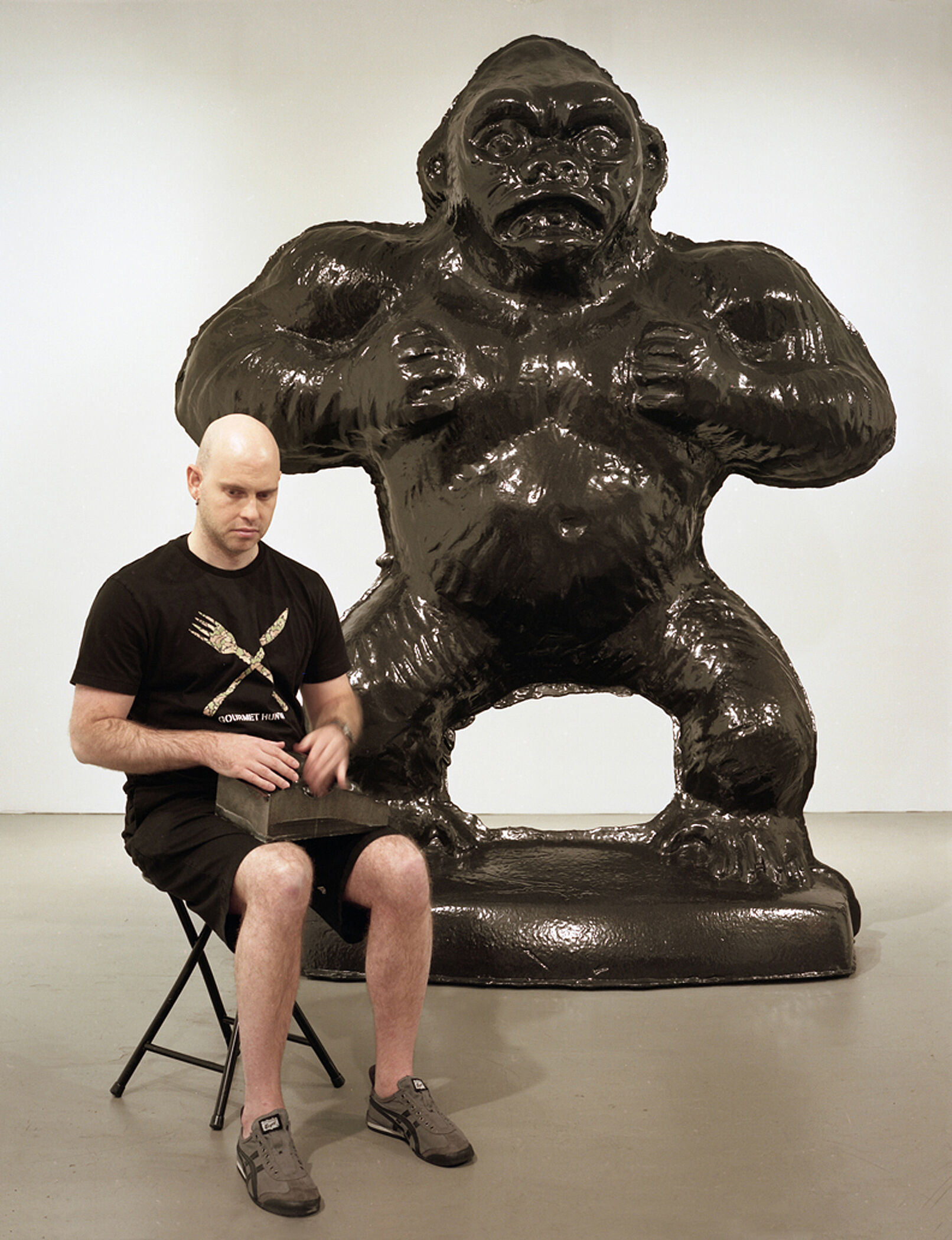Verbal Description and Touch Tour, Jeff Koons: A Retrospective
Sep 23, 2014
The Whitney offers Verbal Description and Touch Tours for visitors who are blind or partially-sighted. Educators who lead the tours are trained to provide a comprehensive description of all the visual elements of a work of art including its size, color, shape, and placement, as well as relevant contextual information about the artist, artistic style, and time period. Whenever possible, the educators offer hands-on materials or objects that visitors can touch in order to enhance their understanding of the work. On September 12, art historian and educator Georgia Krantz led a tour on the fourth floor in the exhibition Jeff Koons: A Retrospective.
When everyone had gathered in front of Koons’s Boy with Pony, (1995-2008), Krantz contextualized the painting by explaining that it was part of Koons’s Celebration series that the artist began in 1994. The series was inspired by an invitation to design a calendar for which he created photographs that referred to holidays and other joyful events. These images formed the basis for a series of large-scale sculptures and paintings. Krantz offered information about the size of the painting, where it is located in the gallery, and how high off the ground it is hung. She gave the painting’s title, date, and medium and described the two toys of a little boy and a pony standing in an environment that looks like an explosion of abstract shapes that appear kaleidoscopic, hallucinogenic, and psychedelic.
Krantz then used metaphors and analogies as well as color references to further explain the elements of the painting while some participants drew on their own experiences to contribute to the visual impression. One participant described how the rounded egg shape of the boy resembled a Weeble, a type of roly-poly toy from the 1970s that wobbles but doesn’t fall down. Krantz described the boy’s bowl-cut, thick brown hair like chocolate icing dripping on a cupcake. One participant said that she had the same toy pony as a child—it was a palamino horse made of hard plastic. Krantz interjected that Koons’s sons played with both of the toys and suggested that the artist may be channeling his inspiration through his family.
The descriptions became more vivid as Krantz explained how Koons created the composition: he placed the toys on a sheet of Mylar, took a photograph, manipulated the image in a computer, and then his assistants painted hundreds of shades and tints of flat blue, white, and black color to depict every reflection. Krantz passed around a large sheet of Mylar for everyone to touch, and described it as a piece of silver plastic that has a very reflective surface. Participants noticed its prismatic effect, making analogies to space blankets, ripples on a pond, and cut diamonds.
During the tour, the group gathered around Koons’s 8-foot-tall, granite replica of a toy gorilla standing in a menacing pose. Krantz described it with its teeth set wide, its mid-section centered squarely over its legs, forearms angled, and fists resting on its chest, ready to pound. The gorilla’s mouth is open and turned down, and its teeth are bared. She also mentioned that the granite is polished, black, and shiny, and its texture is uneven, with ripples, dimples, and imperfections on its surface. A seam runs along the sides of the gorilla from top to bottom, as if it was extracted from a mold. One participant made a connection to the wax toys that he got at the zoo as a child, another person compared it to chocolate animals that also have the seams on their sides from the mold in which they were made. Krantz explained that Koons had the gorilla fabricated large-scale, exactly to the object’s likeness in milled granite, pushing the milling technology to its limits. Assistant to Access and Community Programs Edward Salas passed around a chunk of granite that was modeled from part of the gorilla’s face. It was heavy, cold, and had a rough texture, but it felt as though we were touching the sculpture itself.
Salas commented: “Jeff Koons creates objects that are colossal, bringing the illusion of art into our physical space. We can’t touch the actual works, but the artist gave us sample materials that provide a true sense of the weight, the look, the texture, and ultimately the meaning of these pieces.” Moreover, the astonishing range of descriptions and analogies as well as the visual memories and imagination of the participants on the tour provided a vivid, unforgettable experience of Koons’s work.
Learn more about the Whitney’s Verbal Description and Touch Tours.
By Dina Helal, Manager of Education Resources


